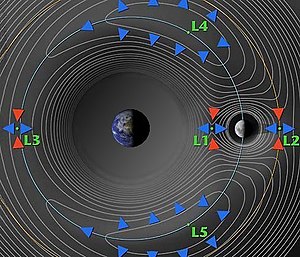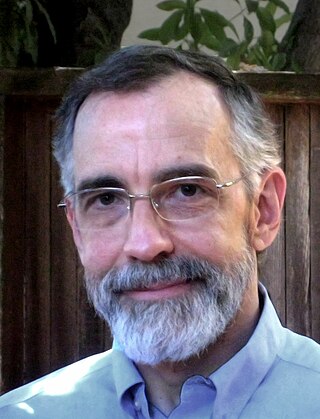
Kim Eric Drexler is an American engineer best known for studies of the potential of molecular nanotechnology (MNT), from the 1970s and 1980s. His 1991 doctoral thesis at Massachusetts Institute of Technology was revised and published as the book Nanosystems: Molecular Machinery Manufacturing and Computation (1992), which received the Association of American Publishers award for Best Computer Science Book of 1992.

In celestial mechanics, the Lagrange points are points of equilibrium for small-mass objects under the gravitational influence of two massive orbiting bodies. Mathematically, this involves the solution of the restricted three-body problem.

A space habitat is a more advanced form of living quarters than a space station or habitation module, in that it is intended as a permanent settlement or green habitat rather than as a simple way-station or other specialized facility. No space habitat has been constructed yet, but many design concepts, with varying degrees of realism, have come both from engineers and from science-fiction authors.
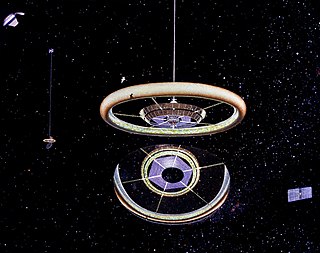
The Stanford torus is a proposed NASA design for a space habitat capable of housing 10,000 to 140,000 permanent residents.

The National Space Society (NSS) is an American international nonprofit 501(c)(3) educational and scientific organization specializing in space advocacy. It is a member of the Independent Charities of America and an annual participant in the Combined Federal Campaign. The society's vision is: "People living and working in thriving communities beyond the Earth, and the use of the vast resources of space for the dramatic betterment of humanity."

The Case for Mars: The Plan to Settle the Red Planet and Why We Must is a nonfiction science book by Robert Zubrin, first published in 1996, and revised and updated in 2011.

The National Space Institute was a space advocacy group, the first of its kind, established by Wernher von Braun to help maintain the public's support for the United States space program. It has since merged, in 1987, with the L5 Society founded by fans of the Space Colonization and Industrialization work of Gerard K. O'Neill, to become the present-day National Space Society.

Transhuman Space (THS) is a role-playing game by David Pulver, published by Steve Jackson Games as part of the "Powered by GURPS" line. Set in the year 2100, humanity has begun to colonize the Solar System. The pursuit of transhumanism is now in full swing, as more and more people reach fully posthuman states.

Gerard Kitchen O'Neill was an American physicist and space activist. As a faculty member of Princeton University, he invented a device called the particle storage ring for high-energy physics experiments. Later, he invented a magnetic launcher called the mass driver. In the 1970s, he developed a plan to build human settlements in outer space, including a space habitat design known as the O'Neill cylinder. He founded the Space Studies Institute, an organization devoted to funding research into space manufacturing and colonization.
"Home on Lagrange (The L5 Song)" is a filk song, written in 1977 by William S. Higgins and Barry D. Gehm, intended to be sung to the tune of Home on the Range. It was inspired by the idea of placing large, self-contained space colonies into stable equilibrium at the L4 or L5 Lagrange points, which had been advocated by Gerard O'Neill. The song's lyrics satirize the enthusiasm of space-colony advocates.
Carolyn P. Meinel is notable for being one of the targets in the hacking scene during the 1990s.

Ad Astra is the quarterly magazine of the National Space Society (NSS). The name literally means "To the Stars".
Constructed in 1976 and 1977, Mass Driver 1 was an early demonstration of the concept of the mass driver, a form of electromagnetic launcher, which in principle could also be configured as a rocket motor, using asteroidal materials for reaction mass and energized by solar or other electric power.

The High Frontier: Human Colonies in Space is a 1976 book by Gerard K. O'Neill, a road map for what the United States might do in outer space after the Apollo program, the drive to place a human on the Moon and beyond. It envisions large human occupied habitats in the Earth-Moon system, especially near stable Lagrangian points. Three designs are proposed: Island one, Island two, and Island 3. These would be constructed using raw materials from the lunar surface launched into space using a mass driver and from near-Earth asteroids. The habitats were to spin for simulated gravity and be illuminated and powered by the Sun. Solar power satellites were proposed as a possible industry to support the habitats.

Lagrange point colonization is a proposed form of space colonization of the five equilibrium points in the orbit of a planet or its primary moon, called Lagrange points.
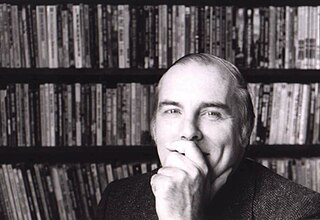
Howard Keith Henson is an American electrical engineer and writer. Henson writes on subjects including space engineering, space law, memetics, cryonics, evolutionary psychology, and the physical limitations of Transhumanism. In 1975, Henson founded the L5 Society with his then-wife Carolyn Meinel to promote space colonization. In 1987 the L5 Society merged with the National Space Institute to form the National Space Society.

The Third Millennium: A History of the World AD 2000–3000 is a 1985 book by the science fiction writers Brian Stableford and David Langford. It is a fictional historical account, from the perspective of the year 3000, giving a future history of humanity and its technological and sociological developments.
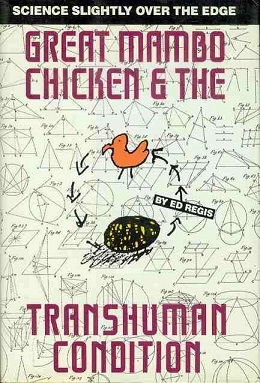
Great Mambo Chicken and the Transhuman Condition is a non-fiction book copyright 1990 by Ed Regis, an American author and educator, that presents a lighthearted look at scientific visionaries planning for a future with "post-biological" people, space colonization, nanotechnology, and cryonics. The book emphasizes the personality and projects of Robert Truax, Eric Drexler, Gerard K. O'Neill, Chris Langton, Freeman Dyson, Hans Moravec, Ralph Merkle, Robert Forward, Keith Henson, Carolyn Meinel, Gary Hudson, Saul Kent, and a number of others.

An O'Neill cylinder is a space settlement concept proposed by American physicist Gerard K. O'Neill in his 1976 book The High Frontier: Human Colonies in Space. O'Neill proposed the colonization of space for the 21st century, using materials extracted from the Moon and later from asteroids.

